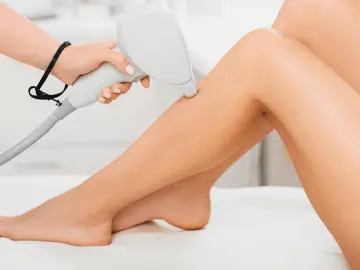Excessive Hair Growth
Excessive hair growth is a problem that can affect men, women and even children, and sufferers can find it difficult to deal with.
What’s considered a ‘normal’ amount of body hair differs significantly across cultures as well as over the decades, and often comes down to personal choice. It’s important here to highlight the difference between ‘unwanted’ and ‘excessive’ hair, which are two different things. Generally in women hair growth is considered to be excessive when it’s coarse and dark, and appears above the lip and on the chin, chest, abdomen or back. This kind of excessive hair is known as hirsutism and is exclusive to women and children.
What causes excessive hair growth?
In women, excessive hair growth is most usually caused by an excess of male sex hormones (called androgens), or an increased sensitivity to them.
In men, androgens are responsible for the development of male sexual characteristics, but in women they affect sex drive, the menstrual cycle and fertility, and can also stimulate hair growth.
Menopause (which can cause high levels of testosterone in the body) is one of the main causes of excessive hair growth in women. However in pre-menopausal women, excess hair is most often a symptom of polycystic ovary syndrome (PCOS).
Other than PCOS, causes of excessive hair growth in a small number of women include:
- Being overweight
- Medication
- A tumour
- A medical condition such as Cushing’s Syndrome, Congenital Adrenal Hyperplasia or Acromegaly.
Excessive hair growth in children
In children, excessive hair growth can be a result of inherited tendency, whereby the hair follicles are very sensitive to even low levels of androgen in the body.
In addition to this, excessive hair growth in babies can be a form of congenital hypertrichosis, which is present at birth and extremely rare.
Excessive hair growth in men
In men, hair tends to grow progressively as they age, and is a result of widely varying amounts of testosterone in the body. It is not usually a cause for concern unless it appears in places other than the norm (such as the palms of the hands and all over the face) and its treatment is primarily for cosmetic reasons.
How to stop excessive hair growth
Whilst hirsutism and hypertrichosis can't be cured, they can be effectively treated in a number of ways, the most common being shaving, plucking, threading, waxing and bleaching.
However, these methods have temporary results and they can be protracted and time-consuming.
Other, more permanent methods of treating excessive hair growth include electrolysis, laser treatment and IPL, which are explained below.
Electrolysis
Electricity is used to destroy hair cells and remove hair permanently. However, it takes many treatments over a long time; it can also be painful and may cause scarring or changes to your skin colour.
Laser hair removal
Lasers are used to destroy the hair. It can last several months and is more effective on women with pale skin and dark hair. Lasers are, at least as effective as electrolysis and much quicker and safer, but for most patients, ongoing treatment is required.
IPL
Lasers are not to be confused with intense pulsed lights (IPLs), most commonly used in beauty spas, which are not strictly lasers but high-energy light sources that can be helpful in hair removal. Be sure to read our download on IPL for more information.
Medical Solutions
If you have been diagnosed with hirsutism or hypertrichosis by a doctor, there are also medications available to help manage these conditions. Many women find that the contraceptive pill is effective at tackling excess hormones, and anti-androgen medication such as cyproterone acetate also works well.
Save Face
At Save Face, we understand that excessive hair growth can be an embarrassing and uncomfortable problem, that's why we strive to keep you informed as to the best and safest treatments available.
Use our search engine to get in touch with a Save Face accredited practitioner who will be able to help you in your quest to stop excessive hair growth, and rest assured that you'll be in safe hands.


